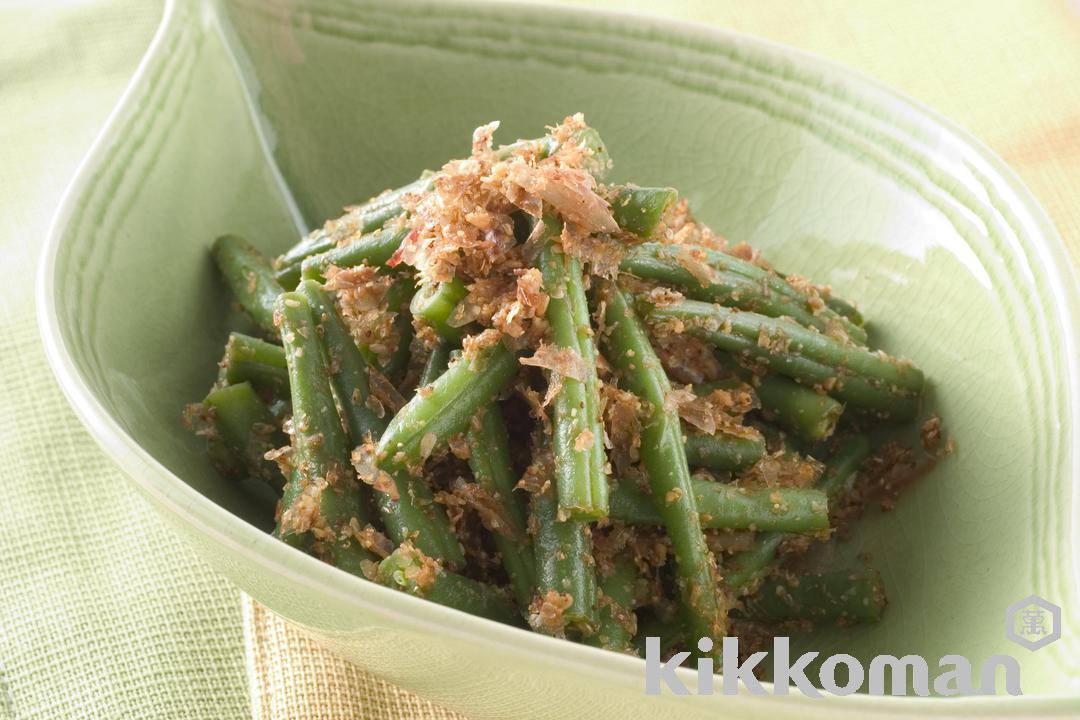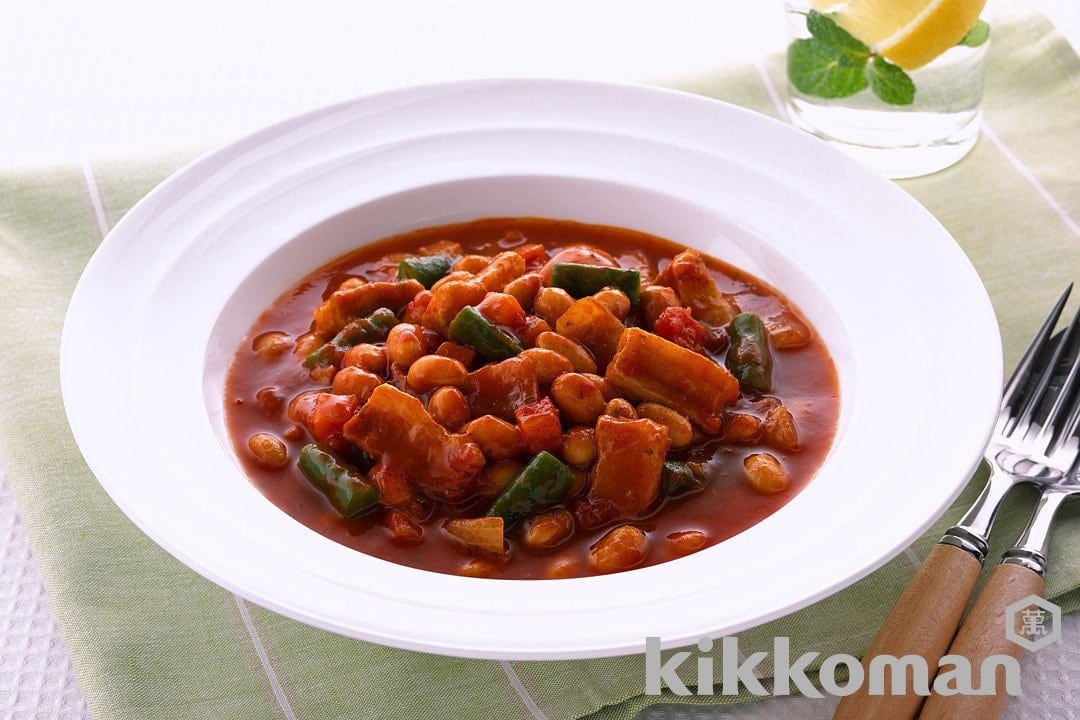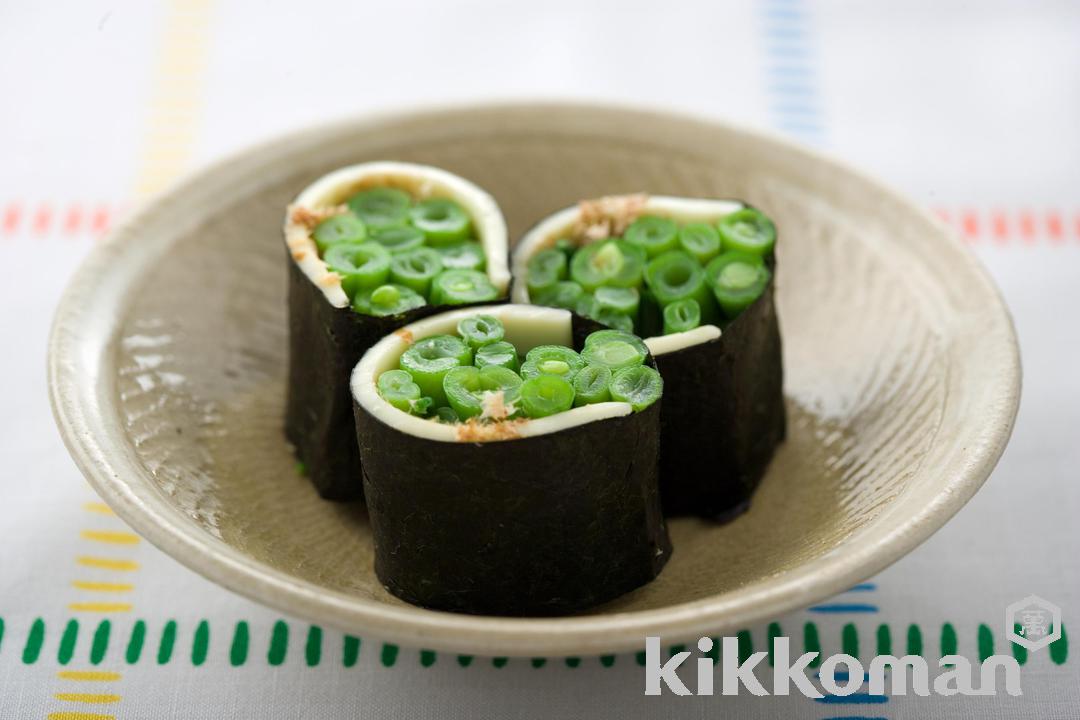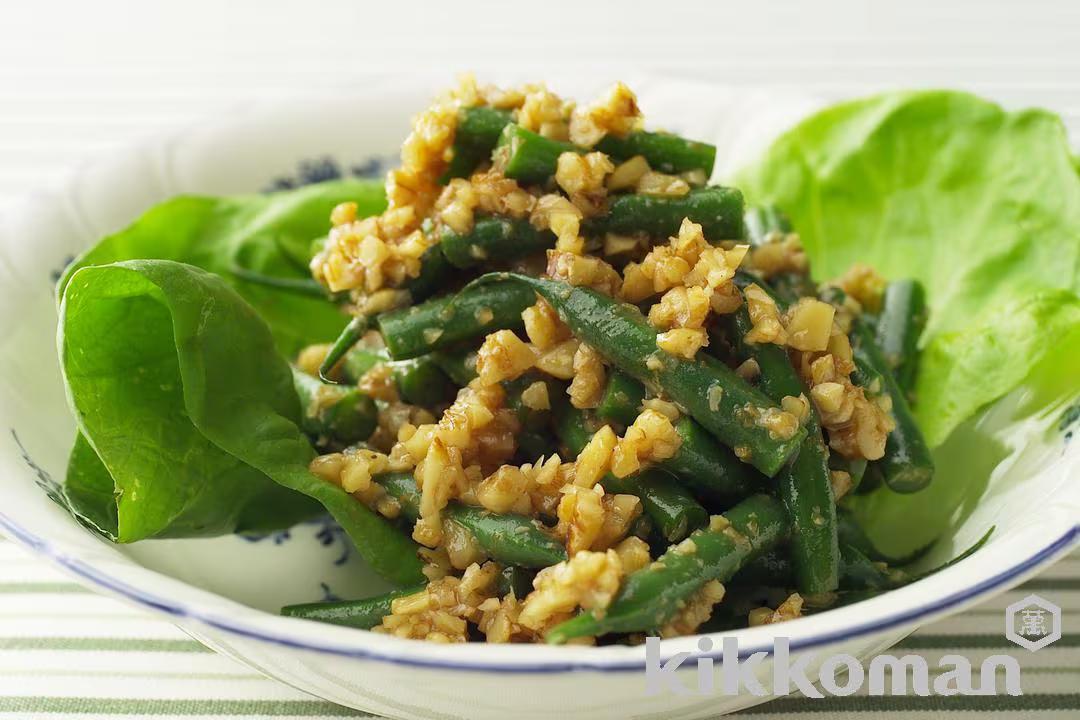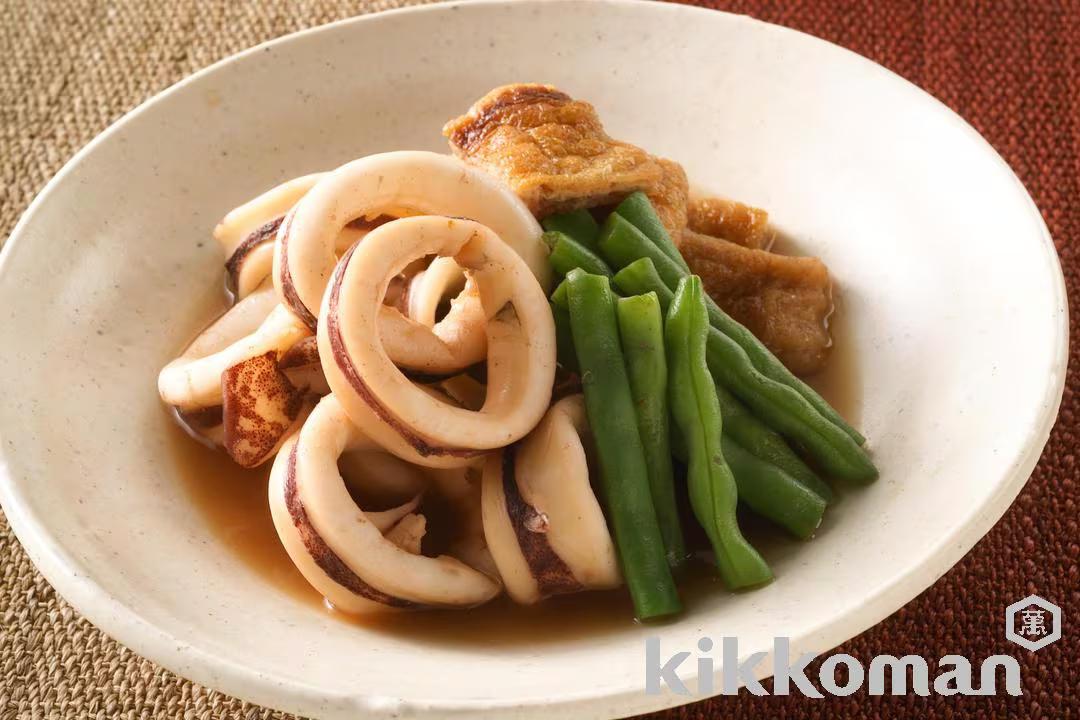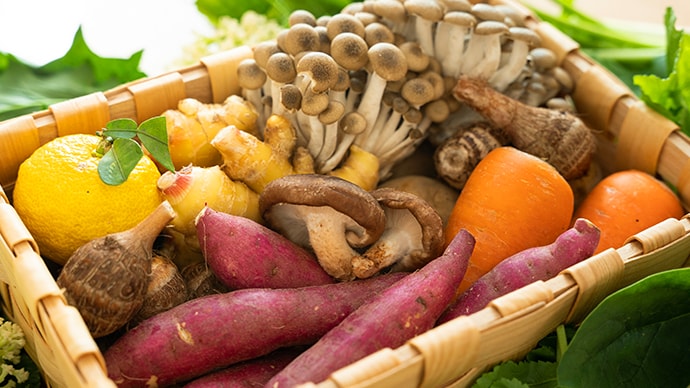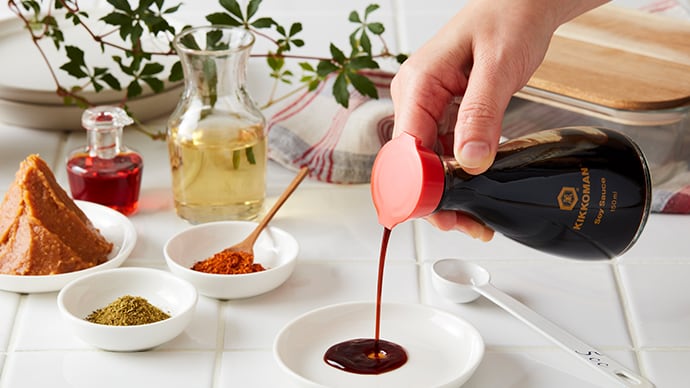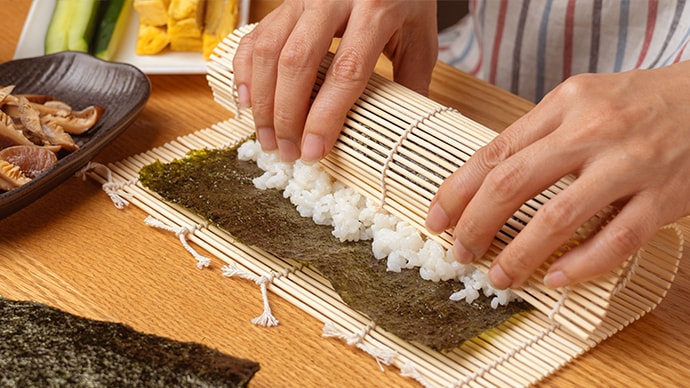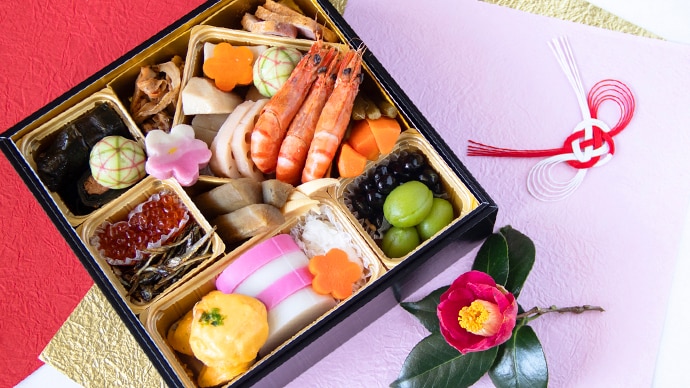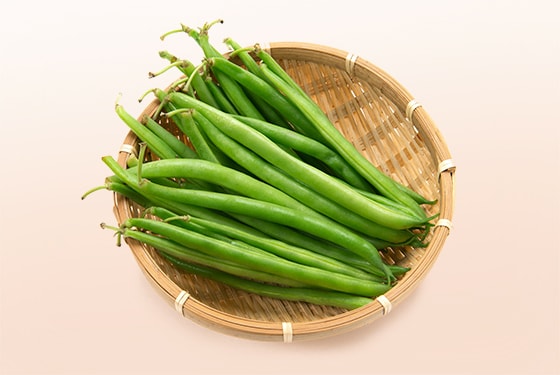
Green beans, also known as French beans (U.K) or string beans (U.S.), are the immature pod of the common bean eaten as a vegetable.
What are green beans?
Green beans (いんげん豆 in Japanese) come in many pod shapes, including round, flat, or thin, each of which can be eaten whole. In addition to being well-suited for use in "aemono" (dressed dishes often made with fresh seasonal vegetables), deep-fried dishes, stir-fries, and simmered dishes, these beans are also used to garnish grilled foods.
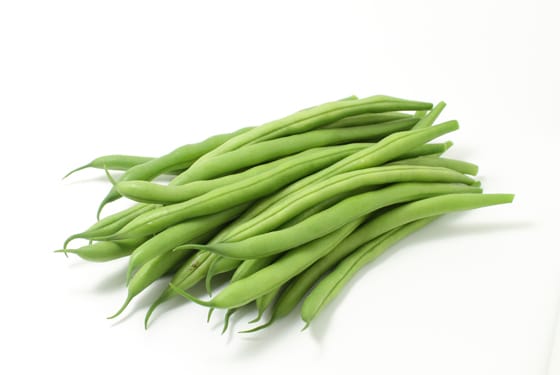
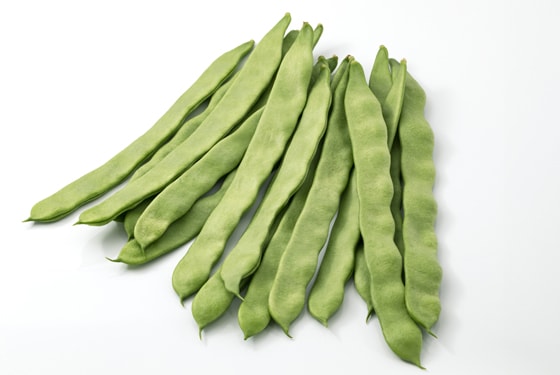
Nutrition facts
Although green beans are categorized as "beans," they do not contain much protein. They are rich in dietary fiber and potassium, so they are expected to improve the intestinal environment, eliminate excess salt from the body, and regulate blood pressure. Green beans contain beta-carotene and vitamin C, which have strong antioxidant properties, vitamin K, which is beneficial for bone health, and niacin, which is involved in energy metabolism. They also contain a lot of folic acid, which helps with the production of red blood cells.
Beta-carotene and vitamin K are better absorbed when consumed with oil, so it is a good idea to eat green beans in oily foods such as stir-fried dishes or dishes dressed in sesame seeds.
Storage to prevent food loss
Wrap in a paper towel and place into a plastic bag or vegetable storage container, then refrigerate to keep from drying out. Use up within 3 to 4 days as green beans don't keep fresh for long at low temperatures.
Trivia
It is said that the Japanese name for green beans, "ingen," comes from a Zen Buddhist monk named Ingen from China who came to Japan in 1654 and taught for a year at Kofukuji Temple in Nagasaki.
Cooking Basics
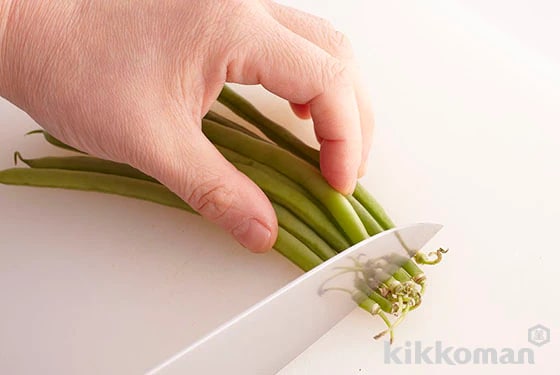
Rather that removing one stem at a time, it is much faster to lay the beans with stems facing in the same direction and then cut these off at once.
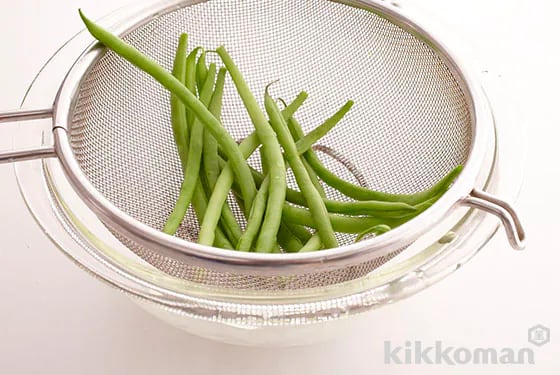
After boiling, transfer the green beans to an all-purpose strainer or colander to cool. This process is called "okaage" in Japanese. Placing the green beans in water to cool will cause them to become soggy. This method is recommended for snow peas, broccoli and green asparagus as well.
Related Recipes
5min+
73kcal
276mg
10min
210kcal
394mg
20min
121kcal
800mg


